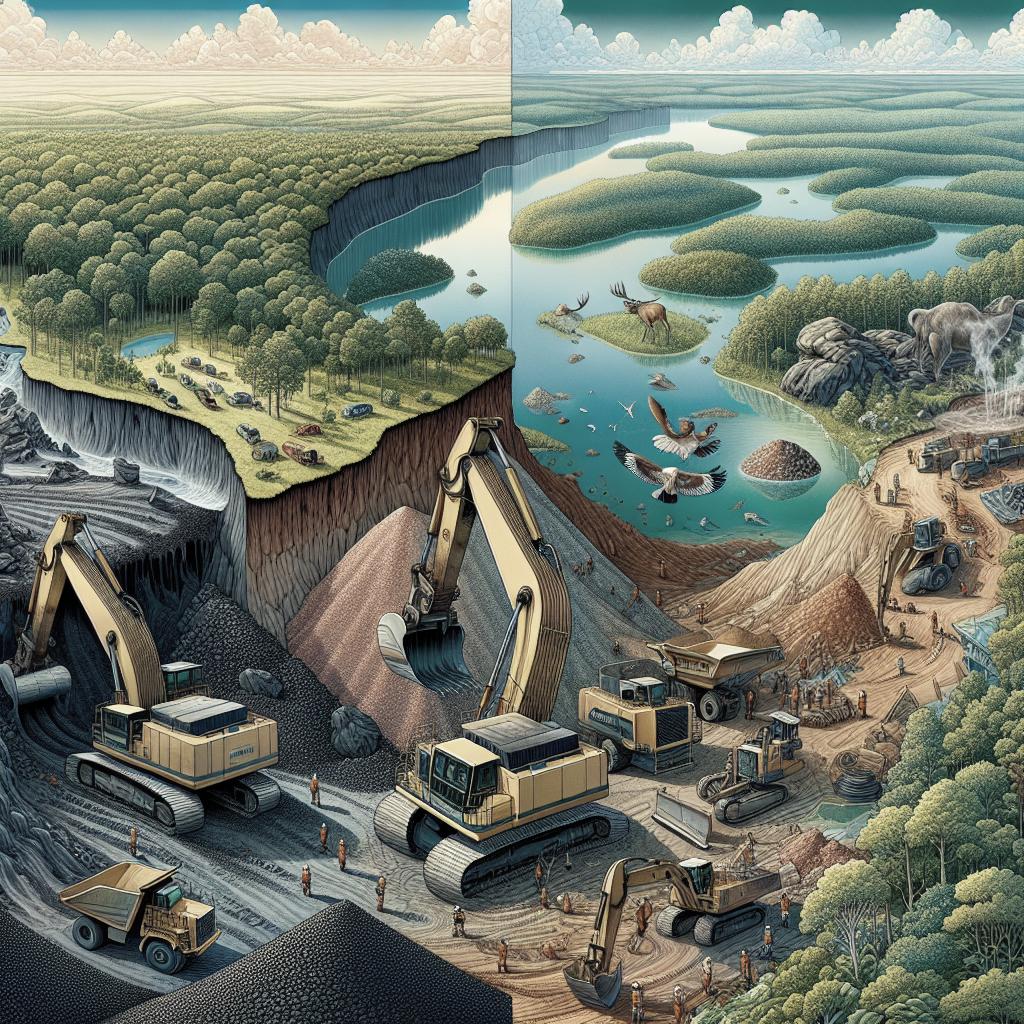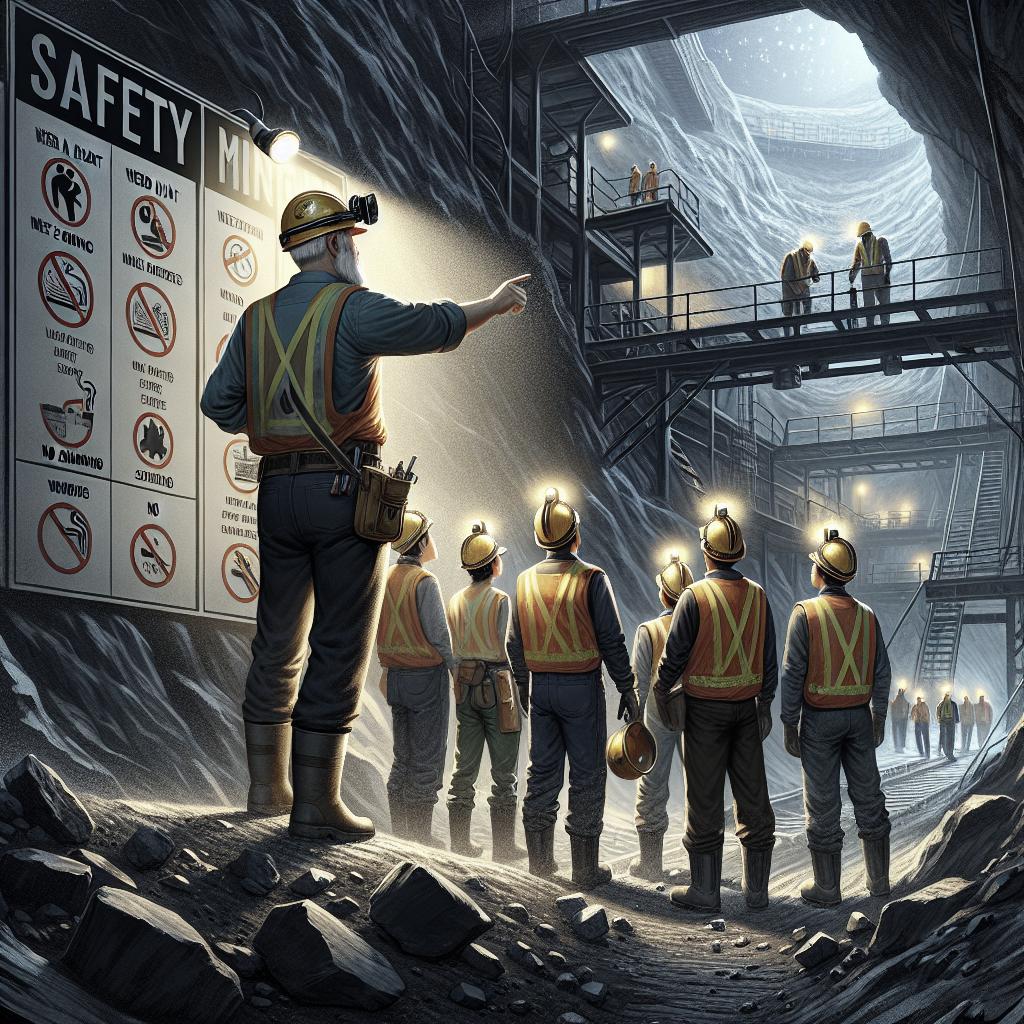<>
In the ever-evolving world of mining, understanding the complex stages of mine development is crucial for anyone involved in the industry, from investors to engineers and environmentalists. This post will guide you through these stages, providing detailed insights into each step from locating potential mineral deposits to making a production decision. By understanding these stages, you’ll gain a better grasp of what it takes to transform a potential site into a productive mine, emphasizing the critical roles of exploration, permitting, drilling, and resource modeling. Along the way, we’ll also touch upon key terms and processes, ensuring you have a comprehensive understanding of mine development. —
HOW IS MINERAL EXPLORATION DONE?
1. LOCATE POTENTIAL DEPOSITS
Locating potential mineral deposits is the first and arguably the most exciting stage of mine development. This phase involves utilizing various geological techniques to identify promising areas where minerals might be found. Geologists often start with large-scale regional surveys, which may include geochemical and geophysical methods, to highlight prospective regions. Based on this initial data, detailed mapping and sampling programs are conducted to narrow down the most promising areas. Once potential targets are identified, geologists use remote sensing techniques, satellite imagery, and aerial photography to get a clearer idea of the region’s geology. This information helps geologists understand surface features that might indicate the presence of mineral deposits below ground. This stage is largely exploratory and involves extensive fieldwork, requiring professionals to spend considerable time in remote and rugged terrains.
2. CLAIM STAKING AND PERMITTING
After identifying a promising site, the next step is to secure legal rights to explore and potentially develop the area. This is done through claim staking and securing the necessary permits. Claim staking involves formally marking the boundaries of the area being claimed, which can be a labor-intensive process. This claim must be registered with the appropriate governmental authority to ensure legal recognition. Permitting is a critical part of this phase and varies from region to region, depending on local regulations. This step involves applying for exploration permits, which can take several months to years to obtain. During this period, mining companies must also engage with local communities, environmental groups, and regulatory bodies to address any concerns and comply with environmental guidelines. This engagement is essential to gain social license to operate and avoid future conflicts.
3. SURFACE EXPLORATION
With legal rights secured, the next step is surface exploration. During this phase, geologists and exploration teams conduct more detailed and specific surveys of the area. This might involve geochemical soil sampling, trenching, and use of geophysical techniques to gather more accurate data about the mineral distribution. The data collected during this phase helps in creating initial models of the mineral deposit. These models are essential for planning further exploration activities and determining the feasibility of the site. Surface exploration is often iterative, with findings guiding subsequent exploration activities to better understand the mineralization of the area.
4. EARLY-STAGE EXPLORATION
Early-stage exploration builds upon the initial findings of surface exploration. This stage involves more intensive methods, such as more detailed geophysical surveys and soil sampling, to understand the subsurface geology better. This phase often includes small-scale excavation and drilling to collect solid samples of the mineralized rock, providing geologists with direct evidence of the presence and quality of minerals. Each sample collected undergoes rigorous analysis in laboratories to determine its mineral content. These analyses provide essential information on the mineral’s grade and concentration, helping in estimating the potential economic value of the deposit. Based on the results, further exploration can be tailored to target the most promising zones of mineralization.
5. CORE DRILLING
As the exploration becomes more advanced, core drilling is implemented to get a more precise understanding of the subsurface mineralization. Core drilling involves extracting cylindrical sections of rock using specialized drill rigs. These core samples are crucial for providing continuous material from the subsurface, allowing geologists to study the geology, structure, and mineral content in detail. Core drilling is significantly more expensive than surface exploration methods, so it is usually reserved for locations that have shown promising results in earlier stages. The results from core samples are used to confirm the continuity and size of the mineral deposit, turning initial speculation into more concrete data that can be used for future planning and resource modeling.
6. RESOURCE MODELING
Resource modeling is the phase where all collected data is integrated to create a detailed 3D model of the mineral deposit. This model includes information on the size, shape, and distribution of the mineralized zones and is fundamental for planning the subsequent stages of mine development. Advanced computer software and geological expertise are required to interpret the data accurately. The model helps in estimating the total resources and reserves of the mineral deposit, forming the basis for economic feasibility studies. It also aids in planning the mine layout, determining the best mining methods, and developing strategies for efficient extraction. Resource modeling is iterative, often refined as new data is collected through further drilling and exploration.
7. DE-RISKING
Before making a production decision, companies need to minimize the risks associated with developing the mine. De-risking involves conducting detailed feasibility studies, which assess the technical, economic, and environmental viability of the mining project. These studies include thorough evaluations of the geology, mining methods, processing techniques, and infrastructure requirements. Environmental and social impact assessments are also crucial at this stage, addressing potential impacts on the local ecosystem and communities. Mitigation plans are developed to manage these impacts, ensuring compliance with regulatory requirements and gaining the necessary environmental approvals. Financial modeling is undertaken to evaluate the project’s potential return on investment, considering fluctuating commodity prices and operational costs.
8. PRODUCTION DECISION
The final stage is making the production decision based on the information gathered during all previous stages. If the feasibility studies indicate that the project is economically and technically viable, the company will proceed with developing the mine. This involves securing financing, finalizing permits, and initiating construction of the mine infrastructure, including roads, power supplies, processing facilities, and worker accommodations. This stage also includes developing detailed mine plans, scheduling, and budgeting for the various operations required to extract the minerals efficiently. Once everything is in place, production can commence, transforming the exploration project into a fully functioning mining operation. Continuous monitoring and management are essential to ensure the mine operates safely, efficiently, and sustainably. —
Lessons Learned
| Stage | Description |
|---|---|
| 1. Locate Potential Deposits | Identify promising regions using geological surveys and remote sensing techniques. |
| 2. Claim Staking and Permitting | Secure legal rights and permits for exploration, involving regulatory compliance and community engagement. |
| 3. Surface Exploration | Conduct detailed surveys, trenching, and sampling to gather more accurate mineral data. |
| 4. Early-Stage Exploration | Employ more intensive methods, including small-scale drilling, to analyze mineral content and quality. |
| 5. Core Drilling | Extract cylindrical rock samples for comprehensive analysis of subsurface geology and mineralization. |
| 6. Resource Modeling | Create a detailed 3D model of the mineral deposit to estimate resources and plan the mine layout. |
| 7. De-Risking | Conduct feasibility studies and impact assessments to mitigate risks and ensure project viability. |
| 8. Production Decision | Make a final decision to develop the mine, involving financing, permits, and infrastructure development. |
BRIAN GOSS
President, Rangefront Mining Services
You may also be interested in…
Basics of Mineral Exploration
How the U.S. and Canadian Mining Sectors Differ
The Impact of Glacial Geology Mining in Canada
The Diversity of Canada’s Commonly Mined Materials
Highest Paying Jobs in the Mining Industry
Mining Jobs in Canada: What to Know
Rangefront Mining Services Expands Mining & Geological Services Operations to Canada
Popular Career Paths in Mining Geology
The Limitations of Geophysical Surveys in Mineral Exploration
Mining Claims: How Long They Last & Important Factors to Consider
The Availability of Mining Jobs in Canada
What Types of Geology Jobs are Available in the Mining Industry?


